Virtual supercars offer a new kind of driving experience
Virtual supercars and the delights of sim racing mean you can test the limits of an Aston Martin Valkyrie or a Zagato, say, without leaving the comfort of your gaming den
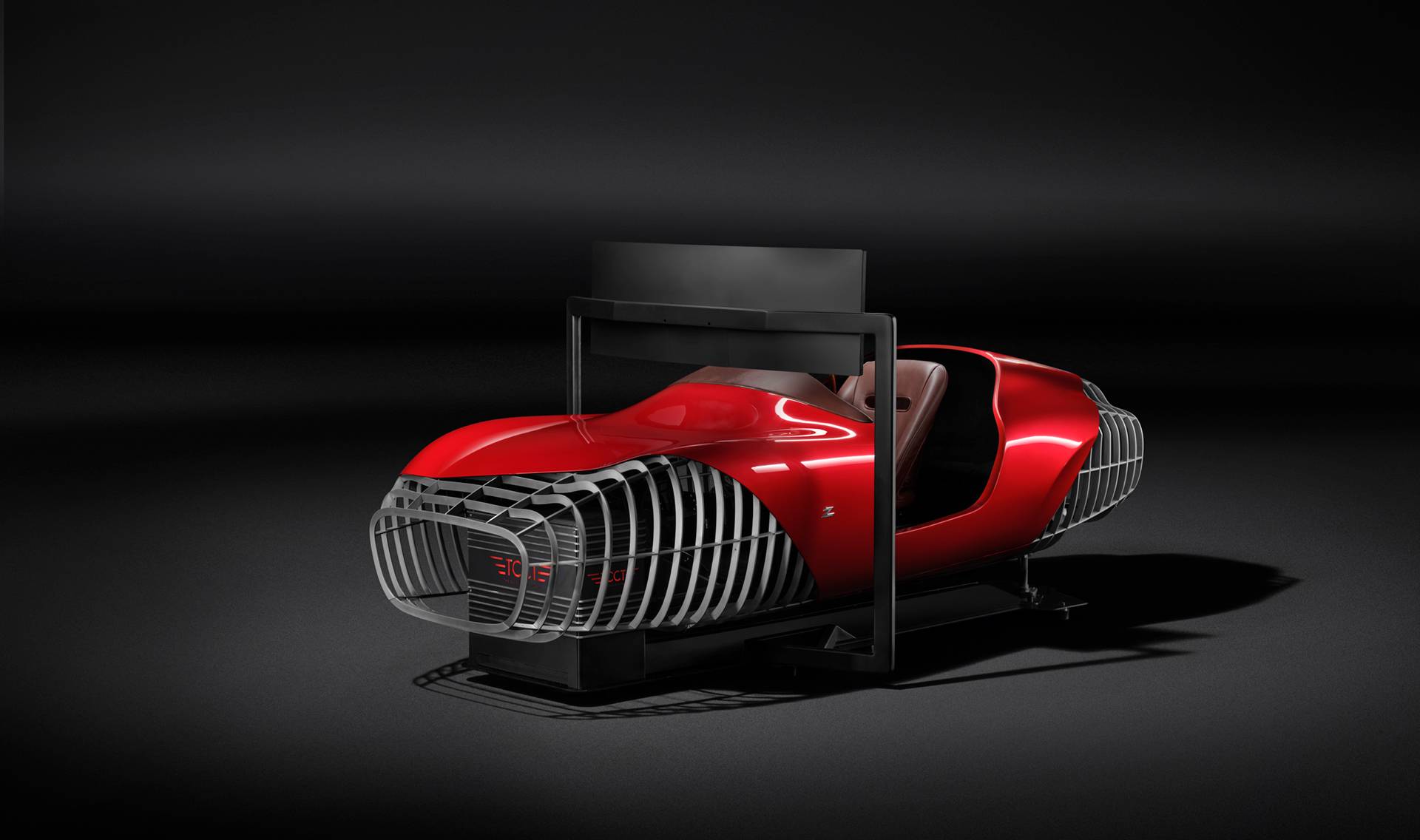
The link between video games and car makers has never been closer. Since 2013, the Gran Turismo series of PlayStation games has included concept cars developed in-house by leading manufacturers, among them Mercedes, Nissan, BMW, Bugatti, Jaguar and McLaren. These Vision Gran Turismo virtual concepts have even spilled over from screens into real life, built up into life-size models (albeit with a fraction of the performance offered by their digital counterparts). It’s all part of the gamification of design, whether it’s Ikea’s new range of gaming furniture or Herman Miller’s collaboration with Logitech, or even concept cars that use the graphical language of video games to improve interfaces and interactivity.
If you’ve just invested a six-figure sum in a real supercar, you’d probably want to do more than just sit and look at it. However, the opportunities to experience its limits in real life are becoming increasingly curtailed by space, legislation, and old-fashioned common sense. Ironically, the right sim racing software will allow a kid with an XBox to glean just as much four-wheeled enjoyment as the owner with a stable full of real Italian exotica, with no fear of expensive insurance claims or eternal YouTube infamy. Simulators have played an important role in training racing drivers for many years, and the gap between pro software and consumer-grade entertainment is getting narrower. The challenge is to incorporate the sim racing hardware into the home without going all-out on the overt geek factor.
For those with the space – be it in sitting rooms, studies, garages, or even dedicated gaming complexes – there’s a new breed of digital driving experience available, developed in close collaboration with manufacturers and designers. The following fleet of virtual supercars is primed and ready to tackle the world’s trickiest circuits and most spectacular roads from the comfort of home.
eClassic Simulators

The Pininfarina Leggenda simulator by eClassic is inspired in part by the 1946 Pininfarina 202 Cisitalia

The Zagato Elio Z simulator by eClassic honours the company's founder, Elio Zagato
A complicated membership system and close ties to some of the most iconic names in Italian car design defines the new eClassic venture, based in Liechtenstein. Working alongside designers at Pininfarina and Zagato, eClassic has created two physical simulator systems, large-scale installations that evoke the lines and curves of classic cars but swap wheels for screens. The company’s very first model, the Pininfarina Leggenda Driving Simulator, was sold at Sotheby’s for €175,000. It also makes a Zagato-inspired model, the Elio Z Edition, with a cutaway-style body that references the construction of post-war classic cars. Both have original wooden-rimmed Nardi steering wheels, leather upholstery and a 49in screen.
CURV Racing Simulators
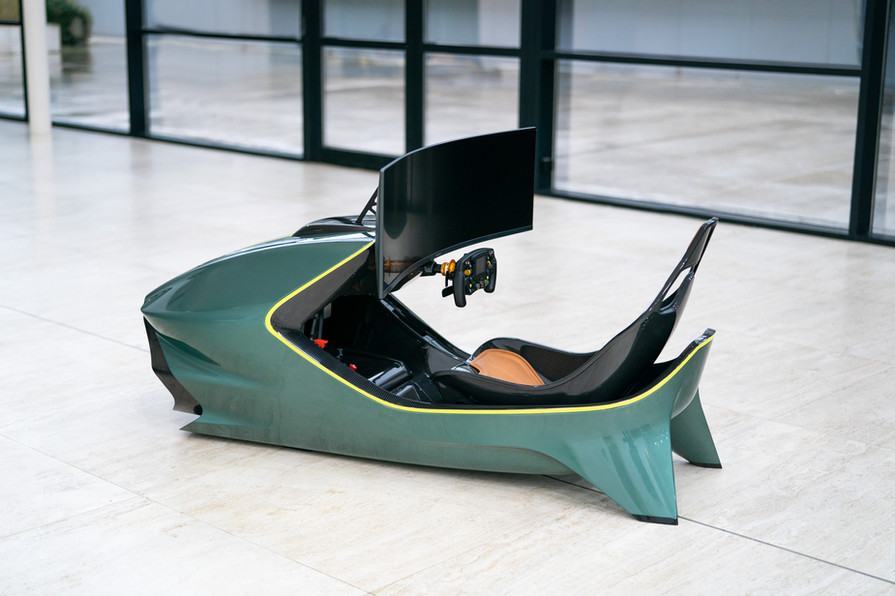
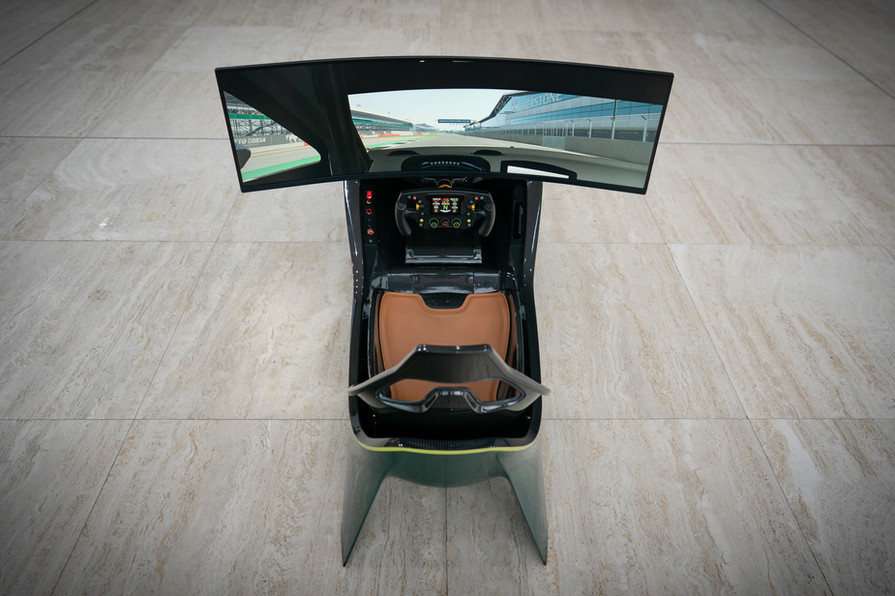
CURV AMR-C01, from £57500
Aston Martin has also ventured into the sim sphere, working in close collaboration with a new start-up, CURV Racing Simulators. Launched by AM test specialist and racing driver Darren Turner, the CURV AMR-CO1 is intended as a companion piece for Aston Martin’s most high-end product, the Valkyrie hypercar, with hardware inspired by the £2m machine and the ability to customise the colour and trim to match your example, should you deign to own both. The time you put in behind the wheel of this machine should also help get more out of the actual machine, with infinite margin for error. In the bespoke apartments at 130 William in New York, where Aston Martin has collaborated with David Adjaye, you can even specify a special ‘sim room’, with the CURV RS taking pride of place.
Receive our daily digest of inspiration, escapism and design stories from around the world direct to your inbox.
Project Brooklyn

Project Brooklyn, concept only
Project Brooklyn is a conceptual gaming chair developed by PC specialist Razer. A carbon-fibre bucket seat, finished in leather and incorporating haptic vibration systems, is paired with a wraparound 60in screen. Formed from a transparent OLED, the idea is to immerse the gamer within their environment, while a foldable table lets you switch between console or PC games.
BMW Designworks Fusion SL
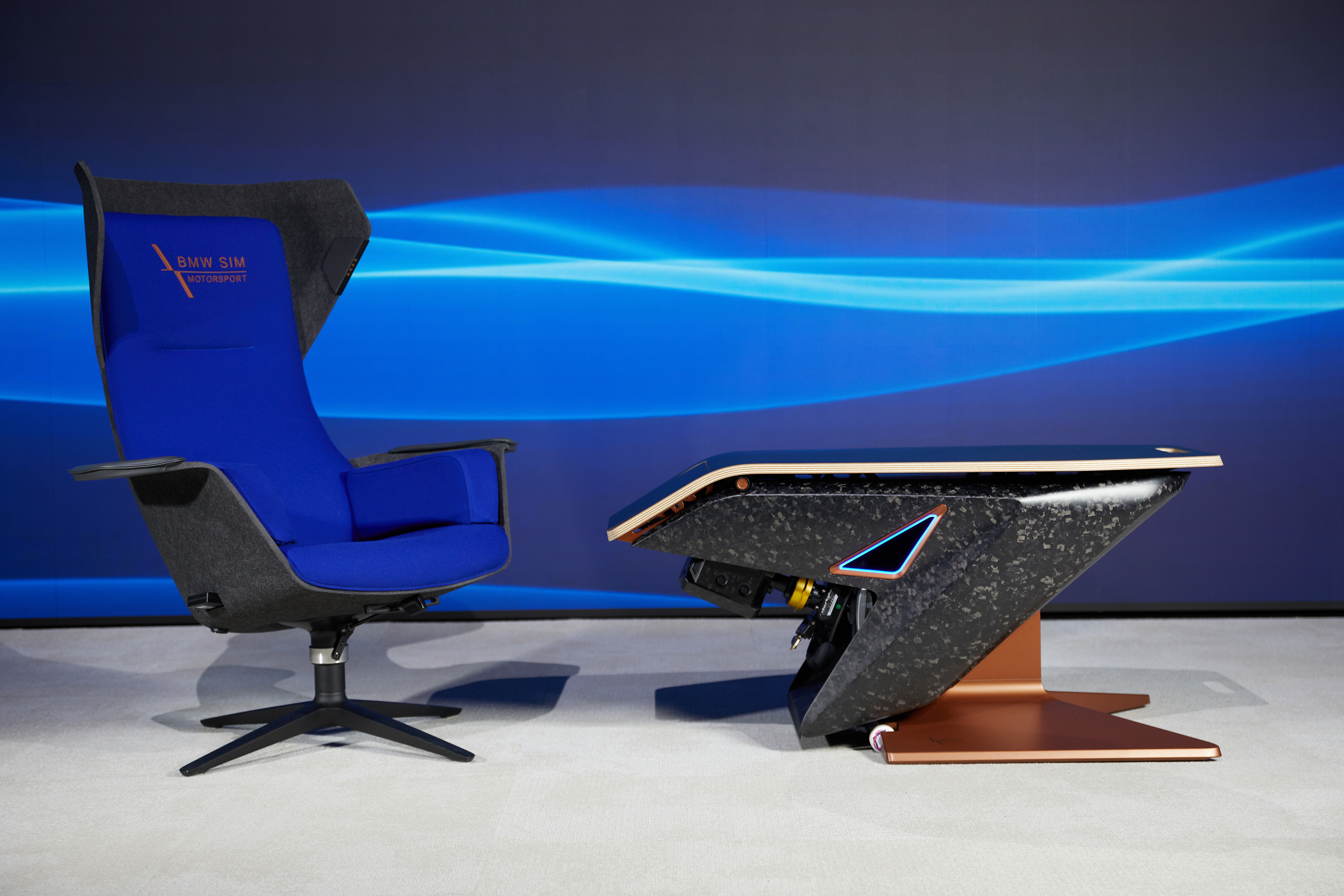
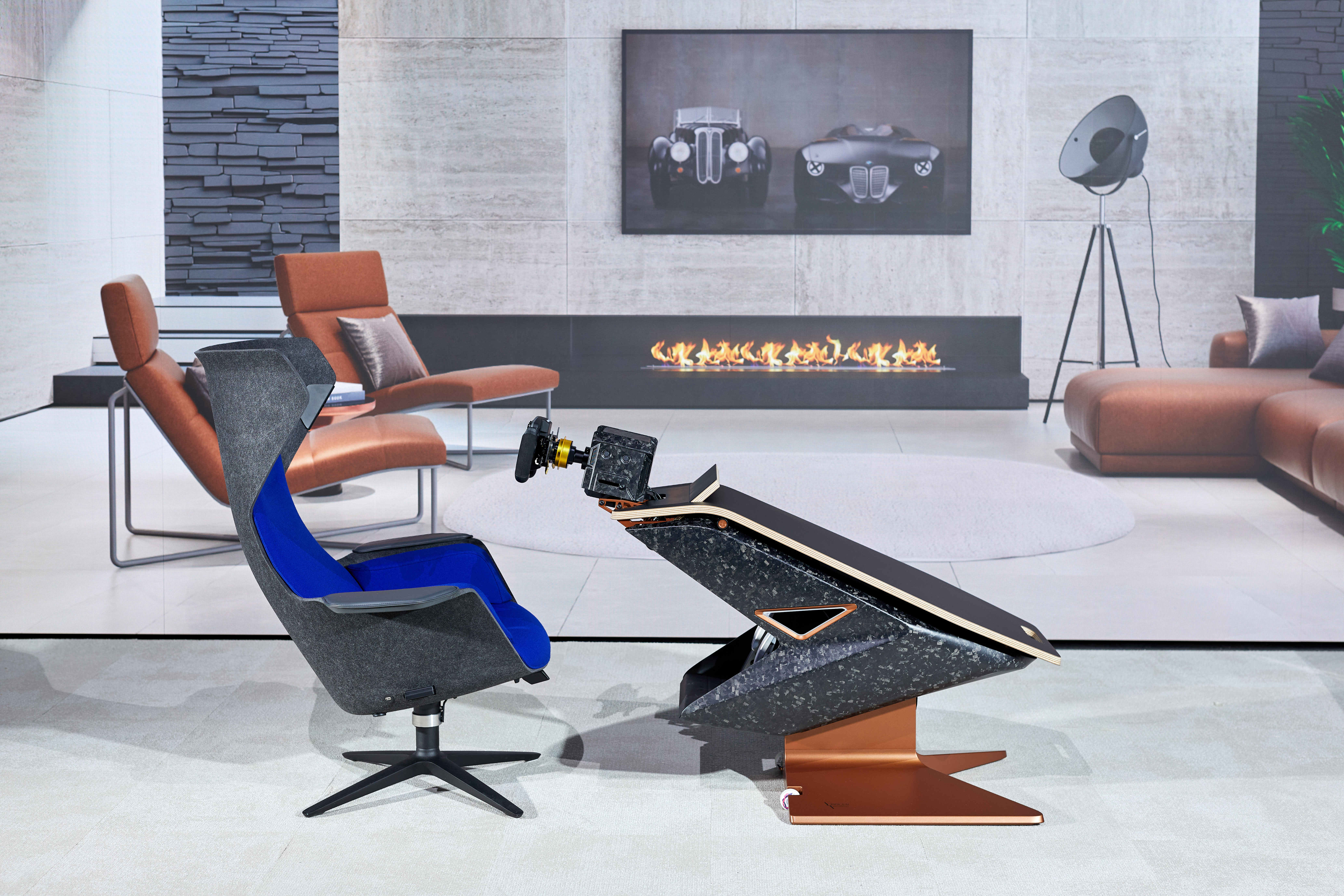
The Fusion SL is a conceptual vision of the sim infrastructure of the future, developed by BMW Designworks in collaboration with German furniture company Sedus. BMW, which already partners with American sim hardware specialist Fanatec, set out to make sim hardware that can also function as a conventional table when not in use. The table pivots into position for gaming, revealing a real BMW racing steering wheel for an authentic driving experience.
bmwgroupdesignworks.com; sedus.com
MG Maze Concept



Not quite a gaming machine, but a concept car with a twist. Chinese manufacturer SAIC, which now owns the MG brand, recently announced the MG Maze, a futuristic sports car swathed with a lifting glass canopy. Inside, the canopy doubles as a display screen, augmenting the real world with data and information – or even, as MG suggests, a treasure hunt-style game that serves as a way of exploring the world.
Jonathan Bell has written for Wallpaper* magazine since 1999, covering everything from architecture and transport design to books, tech and graphic design. He is now the magazine’s Transport and Technology Editor. Jonathan has written and edited 15 books, including Concept Car Design, 21st Century House, and The New Modern House. He is also the host of Wallpaper’s first podcast.
-
 Winston Branch searches for colour and light in large-scale artworks in London
Winston Branch searches for colour and light in large-scale artworks in LondonWinston Branch returns to his roots in 'Out of the Calabash' at Goodman Gallery, London ,
-
 The most anticipated hotel openings of 2026
The most anticipated hotel openings of 2026From landmark restorations to remote retreats, these are the hotel debuts shaping the year ahead
-
 Is the future of beauty skincare you can wear? Sylva’s Tallulah Harlech thinks so
Is the future of beauty skincare you can wear? Sylva’s Tallulah Harlech thinks soThe stylist’s label, Sylva, comprises a tightly edited collection of pieces designed to complement the skin’s microbiome, made possible by rigorous technical innovation – something she thinks will be the future of both fashion and beauty
-
 Peugeot’s sparky 308 gets hybrid power and handsome lines
Peugeot’s sparky 308 gets hybrid power and handsome linesThe Peugeot 308 proves that mass-market design needn’t be dull, blending hybrid power with sharp lines and excellent detailing
-
 BMW Motorrad brings out the big guns for its newest cruisers
BMW Motorrad brings out the big guns for its newest cruisersBMW Motorrad R 18 Bagger and Transcontinental set the tone for high-voltage cruising with a brand collaboration with speaker specialist Marshall
-
 Dacia’s new Manifesto concept is a true outdoor utility vehicle
Dacia’s new Manifesto concept is a true outdoor utility vehicleUtilitarian auto brand Dacia sets a bold new agenda with its Manifesto, a concept car pitched at the active outdoor market
-
 The sun sets on traditional supercars at California’s Monterey Car Week
The sun sets on traditional supercars at California’s Monterey Car WeekMonterey Car Week, the world’s most prestigious car gathering, is showcasing ever-more extravagant special editions, coachbuilt cars and all-new electric concepts. Here are seven key machines from 2022
-
 Is McLaren’s GT a sports car, a tourer, or the best of both?
Is McLaren’s GT a sports car, a tourer, or the best of both?The McLaren GT is a capable all-rounder dressed up in svelte supercar clothes. It might also be the last of its type
-
 Rolls-Royce puts the Phantom back on its lofty pedestal
Rolls-Royce puts the Phantom back on its lofty pedestalA mid-life refresh ensures the flagship Rolls-Royce Phantom Series II is at the top of its game, a last hurrah for traditional engines before an electrified future
-
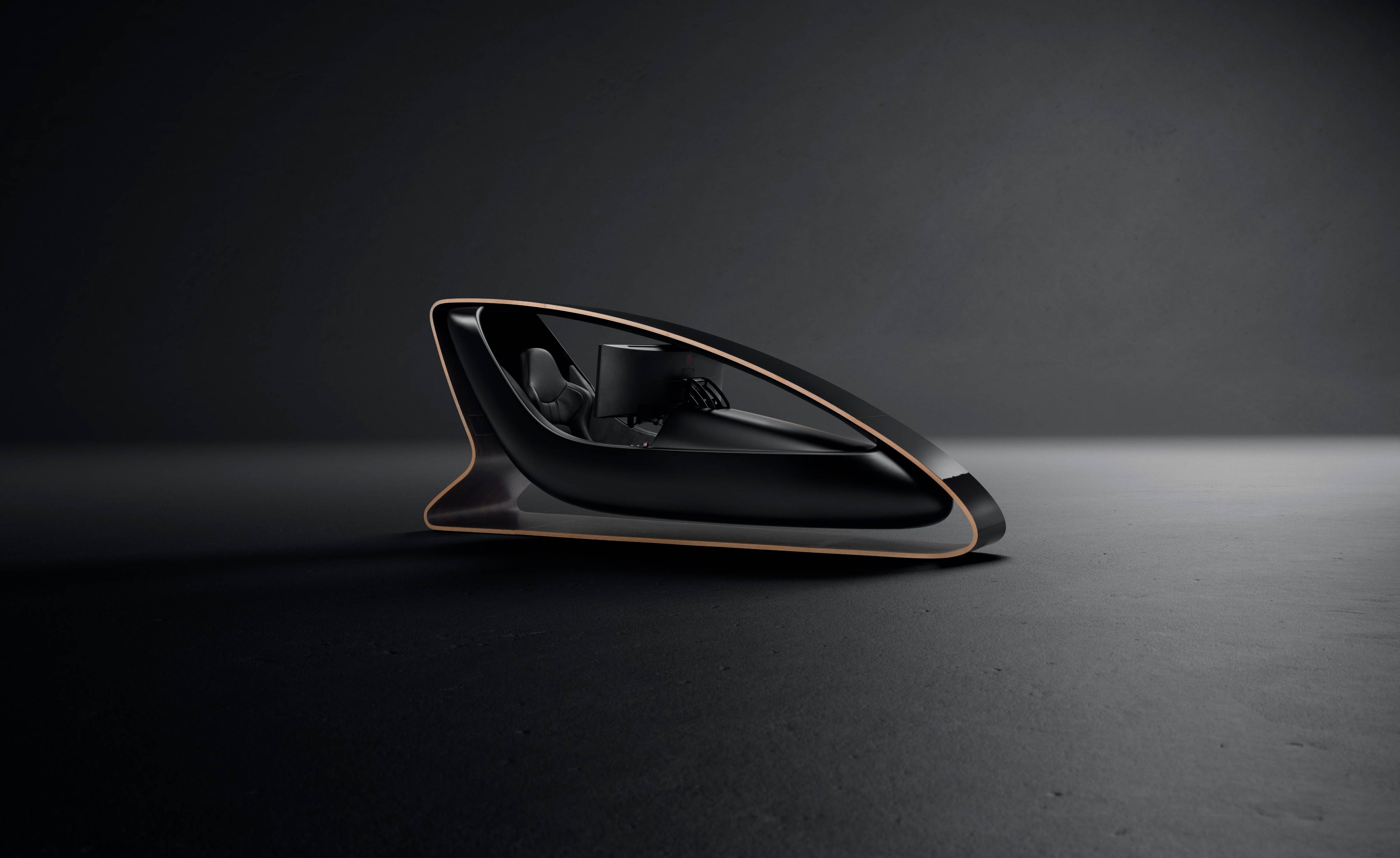 Prodrive’s new racing simulator is shaped by Callum to be front of the grid
Prodrive’s new racing simulator is shaped by Callum to be front of the gridThe racing simulator shapes up – this new design from Prodrive and Callum is honed for the high-end games room
-
 928 by Nardone Automotive: a restomod Porsche with Gallic verve and Italian style
928 by Nardone Automotive: a restomod Porsche with Gallic verve and Italian style928 by Nardone Automotive is a gracefully modernised version of Porsche’s endearingly different 928